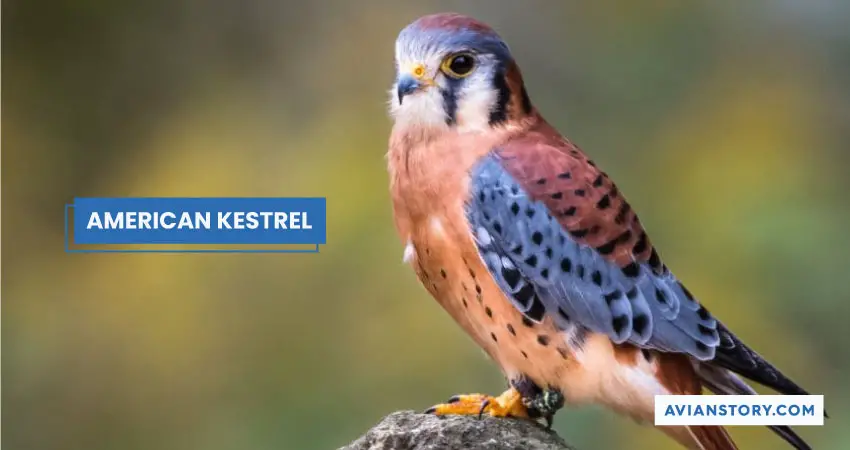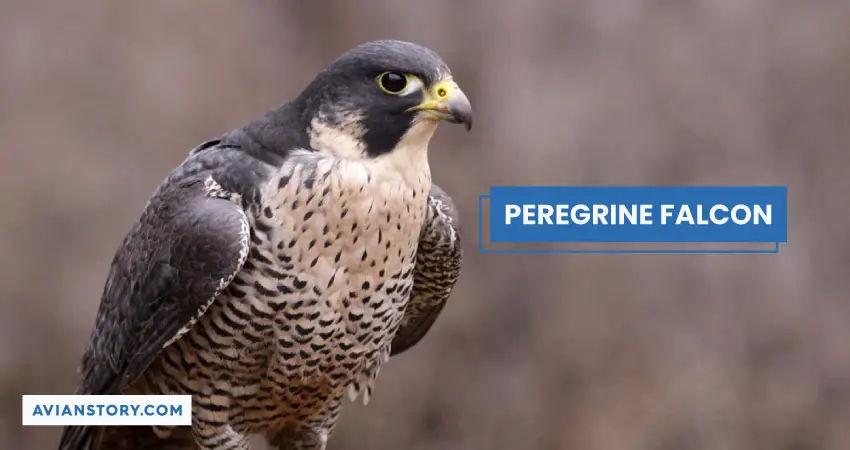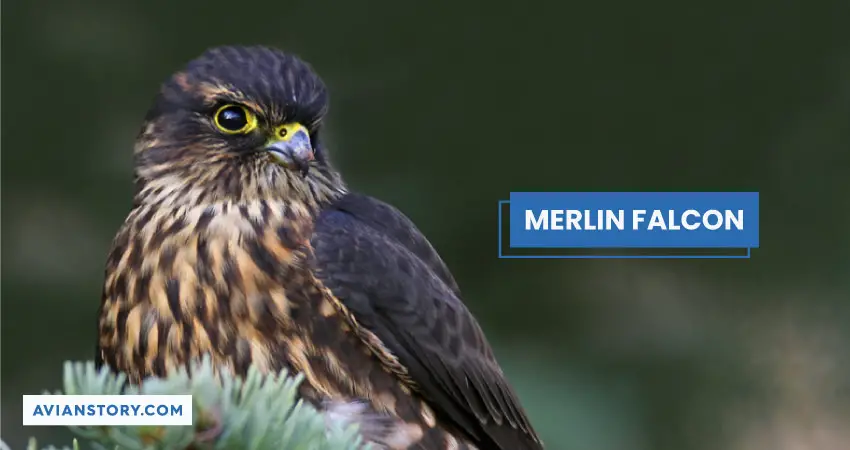3 Types of Falcons in Tennessee: An In-depth Exploration
Falcons, a key avian group belonging to the Falconidae family, are celebrated as the epitome of speed and precision in the bird kingdom. In Tennessee, this fascinating family is represented by 3 species: the American Kestrel, Peregrine Falcon, and Merlin. According to the Tennessee Wildlife Resources Agency, these raptors’ presence has vital implications for the state’s ecosystem, regulating populations of smaller birds and rodents while also indicating environmental health.
The American Kestrel (Falco sparverius), recognized for its vibrant plumage and diminutive size, is Tennessee’s most common falcon species. Peregrine Falcons (Falco peregrinus), though less numerous, are infamous for their breathtaking speed, reaching up to 240 mph in their hunting stoop. Finally, the Merlin (Falco columbarius), a winter visitor to the state, completes this trinity of falcons with its swift, direct flight and distinct predatory prowess.
Within the folds of this article, we strive to sketch an intricate portrait of these raptors, exploring their diverse habitats, unique behaviors, and the profound impact of human activities on their lives. By doing so, we aim to inspire appreciation for these avian wonders and emphasize the importance of their preservation within Tennessee’s landscapes.
What Species of Falcons are found in Tennessee?
Tennessee, with its diverse landscapes ranging from the Appalachian Mountains to the Mississippi River, is home to 3 main species of falcons: the American Kestrel, Peregrine Falcon, and Merlin.
1. American Kestrel
The smallest of all falcons, the American Kestrel, adds a vibrant dash of color to Tennessee’s skies. With their rufous back, blue-grey wings, and black moustache-like markings, these birds are unmistakable in their beauty.

Description and Identification
| Features | Male | Female |
| Size | 8-12 inches | 9-13 inches |
| Wingspan | 20-24 inches | 21-25 inches |
| Weight | 2.8-4.1 oz | 3.1-4.2 oz |
| Colors | Rufous back, Blue-gray wings | Rufous back, streaked with dark brown |
American Kestrels have a fairly wide breeding range which extends throughout most of North America, including Tennessee.
Breeding Habits
These agile birds prefer open habitats for breeding, such as grasslands and farmlands. The breeding season usually begins in late March, with the female laying four to five eggs. Both parents participate in incubation, which lasts for around a month.
Distribution in Tennessee
In Tennessee, the American Kestrel is mostly found in the central and eastern parts of the state. Farmlands, open meadows, and even city parks can be a potential American Kestrel sighting spot.
2. Peregrine Falcon
When it comes to speed, no bird can compete with the Peregrine Falcon. Known as the “cheetah of the sky,” this raptor can reach a speed of 240 mph during its hunting stoop.

Description and Identification
| Features | Male | Female |
| Size | 14.2-16.1 inches | 16.5-19.3 inches |
| Wingspan | 37.4-41.3 inches | 41.3-45.3 inches |
| Weight | 18.7-26.5 oz | 32.1-48.1 oz |
| Colors | Blue-gray back and wings, white underparts with dark spots | Similar to males, but slightly larger in size |
Peregrine Falcons are considerably larger than American Kestrels, with a heavy, muscular build. They are known for their black cap and “moustache” contrasting with their otherwise light-colored face.
Breeding Habits
Interestingly, a 2016 study published in the “Journal of Raptor Research” revealed that Peregrine Falcons show a high degree of site fidelity. In other words, they tend to return to the same breeding spot year after year.
Distribution in Tennessee
Peregrine Falcons were nearly extinct in the eastern United States due to pesticide pollution, but thanks to the robust conservation efforts, their numbers are bouncing back. Tennessee is now home to a small population of Peregrine Falcons, mostly in its urban areas and rocky cliffs.
3. Merlin (Falco columbarius)
The Merlin is a small yet powerful falcon that breeds in the northern parts of North America and winters in the southern states, including Tennessee.

Description and Identification
| Features | Male | Female |
| Size | 9.4-11.8 inches | 11.4-13 inches |
| Wingspan | 20.9-26.8 inches | 23.6-27.2 inches |
| Weight | 5.6-7.7 oz | 6.7-8.5 oz |
| Colors | Blue-gray to blackish back and wings, pale underparts with thin streaks | Dark brown back and wings, whitish to buffy underparts with brown streaks |
Merlins are robust and agile birds with a dark, sleek appearance. They are known for their swift, direct flight, often flying just above the ground to catch their prey off guard.
Breeding Habits
Merlins do not breed in Tennessee, as they are long-distance migratory birds. They nest in the open areas of the northern boreal forests and tundras.
Distribution in Tennessee
In Tennessee, Merlins are usually spotted during their migration season from late September to November. They prefer open habitats, such as grasslands and agricultural fields.
Where are Falcons Most Likely to be Spotted in Tennessee?
If you’ve ever dreamt of observing these fascinating creatures in their natural environment, understanding their preferred habitats in Tennessee will increase your chances of an encounter. Falcons can be found in various settings, ranging from Tennessee’s vast natural landscapes to its bustling urban environments.
Natural Habitats of Falcons in Tennessee
Forests and Woodlands
Tennessee’s diverse natural landscape provides the perfect backdrop for falcons to thrive.
Both the American Kestrel and Merlin are fond of Tennessee’s forests and woodlands, particularly those with open clearings. These open areas serve as perfect hunting grounds for these swift birds of prey.
Wetlands
Wetlands, with their abundant supply of small birds and rodents, are an ideal hunting ground for all 3 species of falcons. The freshwater marshes in the western part of the state, such as the Cross Creeks National Wildlife Refuge, provide an excellent habitat.
Cliffs and Mountains
The Peregrine Falcon, renowned for its love of heights, often chooses Tennessee’s rocky cliffs and mountains as its breeding grounds. Notable sites include the Great Smoky Mountains and cliffs along the Cumberland River.
Urban Habitats of Falcons in Tennessee
While natural landscapes offer vast hunting grounds and breeding sites, don’t be surprised to find falcons amidst Tennessee’s urban jungles too.
City Parks
Open city parks with abundant tree cover and prey availability can serve as habitats for American Kestrels and migrating Merlins.
Rooftops and High Buildings
Peregrine Falcons, in particular, have adapted to city life quite well. High-rise buildings mimic their natural cliffside nesting sites and offer an excellent vantage point for hunting. Downtown Nashville and Memphis have reported successful nesting pairs in recent years.
Bridges
Bridges over rivers serve as excellent nesting sites for Peregrine Falcons. The abundance of pigeons and other small birds in these areas provide ample food resources.
When is the Best Time to Spot Falcons in Tennessee?
Understanding the timing of falcon activity can increase your chances of spotting these magnificent creatures. Their activity often coincides with their breeding seasons and migration patterns.
Breeding Season of Falcons
Breeding seasons vary among the 3 species of falcons found in Tennessee. Observing falcons during this time can offer glimpses into their courtship, nesting, and rearing behaviors.
American Kestrel
The American Kestrel’s breeding season in Tennessee begins in late March and lasts until August. Nesting sites, especially those with nest boxes, are great places to observe these birds during this period.
Peregrine Falcon
Peregrine Falcons typically breed between May and July. They can be seen around their nesting sites on high cliffs, tall buildings, or bridges during this time.
Merlin
Since Merlins do not breed in Tennessee, the best time to spot them is during their migration seasons in spring and fall.
Migration Patterns of Falcons in Tennessee
Migration is a significant event in the life of falcons, especially for the Merlin that travels long distances twice a year.
American Kestrel
American Kestrels are partial migrants. While some remain in Tennessee year-round, others travel south for the winter, returning in early spring.
Peregrine Falcon
Some Peregrine Falcons are year-round residents in urban areas of Tennessee. Others may pass through the state during migration, making spring and fall ideal times for sighting.
Merlin
Tennessee serves as a wintering ground for Merlins. They typically arrive in late September and stay until November.
How Have Human Activities Affected Falcons in Tennessee?
While the relationship between humans and falcons has largely been one of fascination and respect, it’s impossible to overlook the impact of human activities on these raptors’ lives. Urbanization, use of pesticides, and climate change are among the major factors influencing their existence in Tennessee.
Impact of Urbanization on Falcon Habitats
As cities expand and rural areas are converted into urban landscapes, natural habitats of falcons are shrinking. Forests, grasslands, and wetlands are replaced with buildings, roads, and agriculture. This loss of habitat can lead to a decline in prey availability and suitable nesting sites, particularly affecting the American Kestrel.
However, some species like the Peregrine Falcon have adapted well to urban environments, using tall buildings and bridges as nesting sites. They’ve found an abundance of pigeons and other birds in cities, turning urban landscapes into their hunting grounds.
Impact of Pesticides on Falcon Food Chain
Pesticides have a devastating effect on birds of prey, including falcons. In the mid-20th century, the use of DDT (a potent pesticide) almost drove Peregrine Falcons to extinction. The chemical accumulated in falcons through their prey, leading to thin eggshells and breeding failures.
Since DDT’s ban, Peregrine Falcon populations have rebounded, but other pesticides continue to pose a risk. For instance, a study published in “Environmental Science & Technology” in 2018 revealed that newer pesticides could also harm birds of prey.
Impact of Climate Change on Falcon Migratory Patterns
Climate change affects bird migration patterns, and falcons are no exception. Changes in temperature, rainfall patterns, and extreme weather events can influence their migration timing and breeding success. For instance, if winters become milder, some falcons like the American Kestrel might reduce their migratory behavior.
What Conservation Efforts are in Place to Protect Falcons in Tennessee?
Falcons in Tennessee face various threats, but numerous conservation efforts have been implemented to protect these magnificent creatures. These range from legal protections to various initiatives by governmental and non-governmental organizations.
Legal Protection for Falcons
All falcon species are protected under the Migratory Bird Treaty Act, which prohibits hunting, capturing, killing, or selling of these birds. Additionally, the Peregrine Falcon is protected under the Tennessee Endangered Species Act.
Conservation Programs for Falcons
1. Tennessee Wildlife Resources Agency Initiatives
The Tennessee Wildlife Resources Agency (TWRA) has been instrumental in Peregrine Falcon conservation. They’ve established a breeding program and regularly monitor known nesting sites.
2. Non-governmental Organization Programs
Groups like the Tennessee Ornithological Society and The Nature Conservancy work on preserving critical habitats and educating the public about the importance of bird conservation.
3. Citizen Science Contributions
Projects such as the Tennessee Bird Atlas rely on citizen scientists to collect valuable data on bird species across the state, including falcons. Such initiatives provide essential information for conservation planning.
Conclusion
Falcons, with their swift flight and keen eyesight, are a captivating sight in the Tennessee skies. Understanding their behaviors, habitats, and the challenges they face is the first step towards their conservation. As we continue to coexist with these magnificent creatures, it’s our collective responsibility to ensure that they remain a thriving part of Tennessee’s rich biodiversity.
Falcons Found in Other States:
